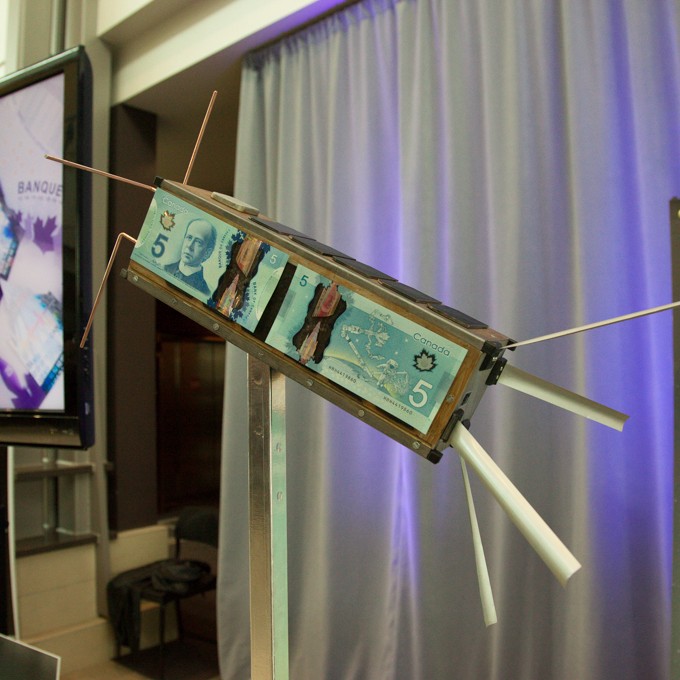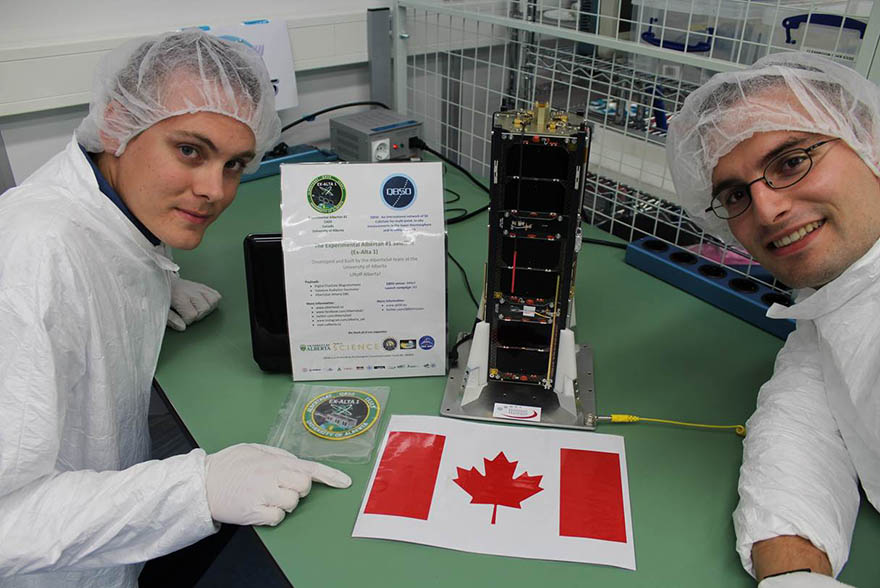Ex-Alta 1
The Experimental Albertan #1 Satellite
AlbertaSat built the Experimental Albertan #1 (Ex-Alta 1) Satellite as a part of the QB50 consortium mission. Along with 37 other cube satellites in the QB50 mission, Ex-Alta 1 measured patterns of space weather on a completely new scale. Ex-Alta 1 launched to the International Space Station April 18, 2017 from Cape Canaveral Air Force Station and was deployed May 26, 2017, with its work ending on November 14, 2018. Ex-Alta 1 represented a first step for many of the participants, and allowed the University of Alberta and the rest of the province to demonstrate the ability to undertake such a project.




Recent Posts
- Member Spotlight – Erik Halliwell September 10, 2024
- Member Spotlight – Sally Palmers September 4, 2024
- Member Spotlight – Aaron Berhane August 26, 2024
Mission Objectives
Scientific
1. Study space weather by observing plasma flow interacting with the earths magnetosphere and lower ionosphere with data from the QB50 constellation.
2. Serve as a platform for the In Orbit Demonstration (IOD) of a digital fluxgate magnetometer designed at the University of Alberta.
Cultural & Educational
1. Provide a foundation on which to begin a space engineering, space science and/or cube satellite program at the University of Alberta.
2. Promote the development of an Albertan commercial space industry that can extend outside of the University to include other organizations.
CubeSat?
A cubesat is a small type of satellite that can be outfitted to accomplish all sorts of work in space. First developed in 1999, cubesats offer a platform from which groups like AlbertaSat can build. They come in units (U’s) of 10cm x 10cm x 10cm that allow for various shapes of cubesats depending on the size of the payload that has to be sent into space. Ex-Alta 1 was a 3U cubesat, composed of three units, making it about the size of a loaf of bread. Watch the assembly video on Youtube to see just what goes into every millimeter of our cubesat. Not only are cubesats a smart way to build a satellite, they also:
- Don’t contribute to space debris, as they burn up upon reentry
- Are low-cost, since they are small and light
- Don’t take too long to build, thanks to open-source concepts and collaboration
- Are a good way to introduce satellites to youth and to the public, thanks to their relatively simple design
The Importance of Studying Space Weather
Space weather can affect satellites in orbit, the radiation exposure of personnel in airplanes, power infrastructure, pipeline infrastructure and life on Earth in general. A good example is the Carrington Event in 1859 in which a solar flare and coronal mass ejection hit Earth causing the most extreme geomagnetic storm on record. The bright aurora was observed as far south as the Caribbean, and telegraph lines were seen sparking and lighting on fire.
In March 1989 a much smaller geomagnetic storm knocked the hydro Quebec electrical grid offline for 9 hours and caused intermittent problems in the GOES weather satellite, NASA TDRS-1 communication satellites and even in the Space Shuttle Discovery. If a storm the size of a Carrington Event were to happen today, it would likely have devastating effects on our modern technological society. Satellites in high orbits could be knocked out and power grids around the world permanently damaged or destroyed.
In a recent investigation highlighted by the New York Times, US and UK science advisors estimated the cost of a severe space weather storm to be about “$2 trillion during the first year in the United States alone, with a recovery period of 4 to 10 years.”1 Studying space weather and the interaction of the Sun with the Earth’s magnetosphere will allow us to improve our understanding of solar storms and help minimize the global impact of potentially crippling events in humanity’s age of technology and reliance upon electricity.
